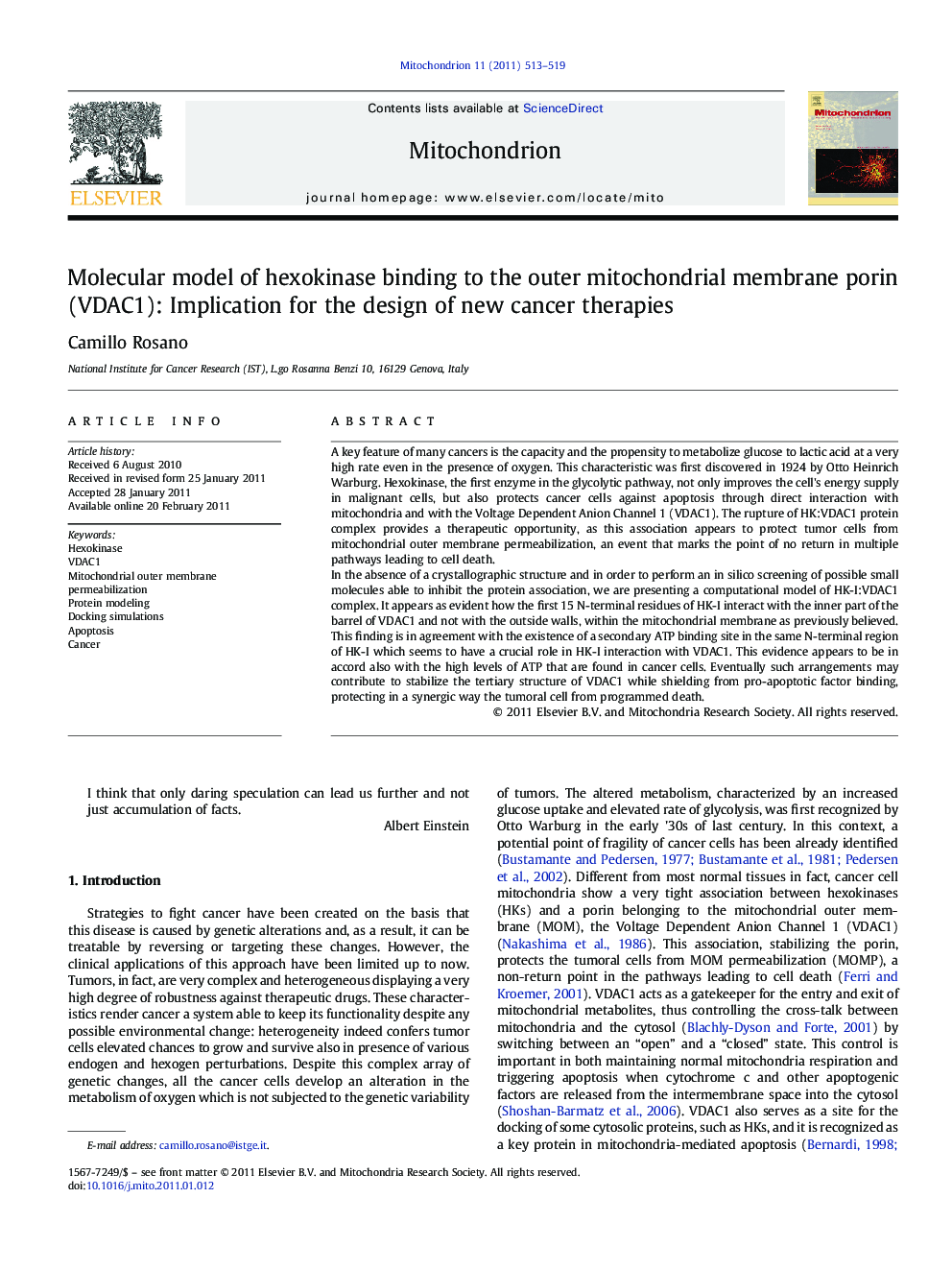| Article ID | Journal | Published Year | Pages | File Type |
|---|---|---|---|---|
| 10883170 | Mitochondrion | 2011 | 7 Pages |
Abstract
In the absence of a crystallographic structure and in order to perform an in silico screening of possible small molecules able to inhibit the protein association, we are presenting a computational model of HK-I:VDAC1 complex. It appears as evident how the first 15 N-terminal residues of HK-I interact with the inner part of the barrel of VDAC1 and not with the outside walls, within the mitochondrial membrane as previously believed. This finding is in agreement with the existence of a secondary ATP binding site in the same N-terminal region of HK-I which seems to have a crucial role in HK-I interaction with VDAC1. This evidence appears to be in accord also with the high levels of ATP that are found in cancer cells. Eventually such arrangements may contribute to stabilize the tertiary structure of VDAC1 while shielding from pro-apoptotic factor binding, protecting in a synergic way the tumoral cell from programmed death.
Keywords
Related Topics
Life Sciences
Biochemistry, Genetics and Molecular Biology
Biophysics
Authors
Camillo Rosano,
